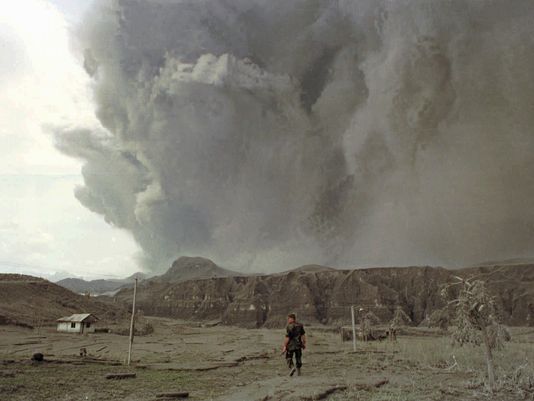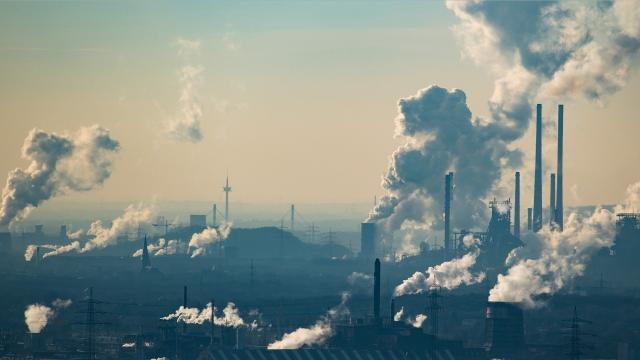Creating Clouds to Stop Global Warming Could Wreak Havoc
ENVIRONMENT, 29 Jan 2018
The U.S. government office that oversees federally funded climate research has recommended studies into two areas of geoengineering research, marking the first time scientists in the executive branch have formally called for studies in the controversial field.
22 Jan 2018 – To counteract global warming, humans may someday consider spraying sulfur dioxide into the atmosphere to form clouds — and artificially cool the Earth.
The idea behind the process, known as geoengineering, is to keep global warming under control — with the ideal solution still being a reduction in the emissions of greenhouse gases.
However, suddenly stopping that spraying would have a “devastating” global impact on animals and plants, potentially even leading to extinction, according to the first study on the potential biological impacts of climate intervention.
“Rapid warming after stopping geoengineering would be a huge threat to the natural environment and biodiversity,” said study co-author Alan Robock of Rutgers University. “If geoengineering ever stopped abruptly, it would be devastating, so you would have to be sure that it could be stopped gradually, and it is easy to think of scenarios that would prevent that.”

A soldier walks towards an abandoned house as Mount Pinatubo spews ash as high as 12 miles during its eruption on June 19, 1991. When Pinatubo erupted, it cooled the Earth for about a year because the sulfate particles in the upper atmosphere reflected some sunlight. Several scientists have proposed doing the same artificially to offset global warming.
(Photo: Bullit Marquez, Associated Press)
Rapid warming forced animals to move. But even if they could move fast enough, they might not be able find places with enough food to survive, the study said.
“Plants, of course, can’t move reasonably at all. Some animals can move and some can’t,” Robock said.
If stratospheric climate geoengineering is deployed but not sustained, its impacts on species and communities could be far worse than the damage averted.
While animals would be able to adapt to the cooling effects of the spraying, if it’s stopped the warming would ramp up too fast for the animals to keep up.
Researchers in the study used computer models to simulate what would happen if geoengineering led to climate cooling and then what would happen if the geoengineering stopped suddenly.
Starting geoengineering then suddenly stopping it isn’t necessarily far-fetched.
“Imagine large droughts or floods around the world that could be blamed on geoengineering, and demands that it stop. Can we ever risk that?,” Robock said.
The idea behind this type of geoengineering would be to create a sulfuric acid cloud in the upper atmosphere that’s similar to what volcanic eruptions produce, Robock said. The clouds, formed after airplanes spray sulfur dioxide, would reflect solar radiation and thereby cool the planet.
Geoengineering takes its cue from the natural experiment that actually had made the only recent dent in global warming’s rise in the last few decades — the 1991 eruption of Mount Pinatubo in the Philippines, which blasted more than 15 million tons of sulfur dioxide 21 miles high, straight into the stratosphere.
The stratosphere suspended those sulfur particles in the air worldwide, where the haze they created scattered and reflected sunlight away from the Earth and cooled global atmospheric temperatures nearly 0.7 to 0.9 degrees Fahrenheit in 1992 and 1993, before finally washing out, according to NASA’s Goddard Institute for Space Studies estimates.
But the airplanes spraying the sulfur dioxide would have to continuously fly into the upper atmosphere to maintain the cloud because it would last only about a year if spraying stopped, Robock said. The airplane-spraying technology may be developed within a decade or two, he added.
As detailed in the 2016 Paris climate change agreement, the world’s nations have pledged to ensure that global warming stays well below 3.6 degrees above industrial levels.
This method of geoengineering is one of two primary ways humans could counteract man-made climate change, with the other being trying to remove the carbon dioxide that’s already in the atmosphere.
Both procedures remain theoretical and untested at this point.
The study was published in the peer-reviewed British journal Nature Ecology & Evolution.
______________________________________________
 Doyle Rice has covered weather and climate for USA TODAY since 2004. From blizzards and hurricanes to tornadoes and floods, the USA’s wild weather keeps him busy.
Doyle Rice has covered weather and climate for USA TODAY since 2004. From blizzards and hurricanes to tornadoes and floods, the USA’s wild weather keeps him busy.
DISCLAIMER: The statements, views and opinions expressed in pieces republished here are solely those of the authors and do not necessarily represent those of TMS. In accordance with title 17 U.S.C. section 107, this material is distributed without profit to those who have expressed a prior interest in receiving the included information for research and educational purposes. TMS has no affiliation whatsoever with the originator of this article nor is TMS endorsed or sponsored by the originator. “GO TO ORIGINAL” links are provided as a convenience to our readers and allow for verification of authenticity. However, as originating pages are often updated by their originating host sites, the versions posted may not match the versions our readers view when clicking the “GO TO ORIGINAL” links. This site contains copyrighted material the use of which has not always been specifically authorized by the copyright owner. We are making such material available in our efforts to advance understanding of environmental, political, human rights, economic, democracy, scientific, and social justice issues, etc. We believe this constitutes a ‘fair use’ of any such copyrighted material as provided for in section 107 of the US Copyright Law. In accordance with Title 17 U.S.C. Section 107, the material on this site is distributed without profit to those who have expressed a prior interest in receiving the included information for research and educational purposes. For more information go to: http://www.law.cornell.edu/uscode/17/107.shtml. If you wish to use copyrighted material from this site for purposes of your own that go beyond ‘fair use’, you must obtain permission from the copyright owner.
